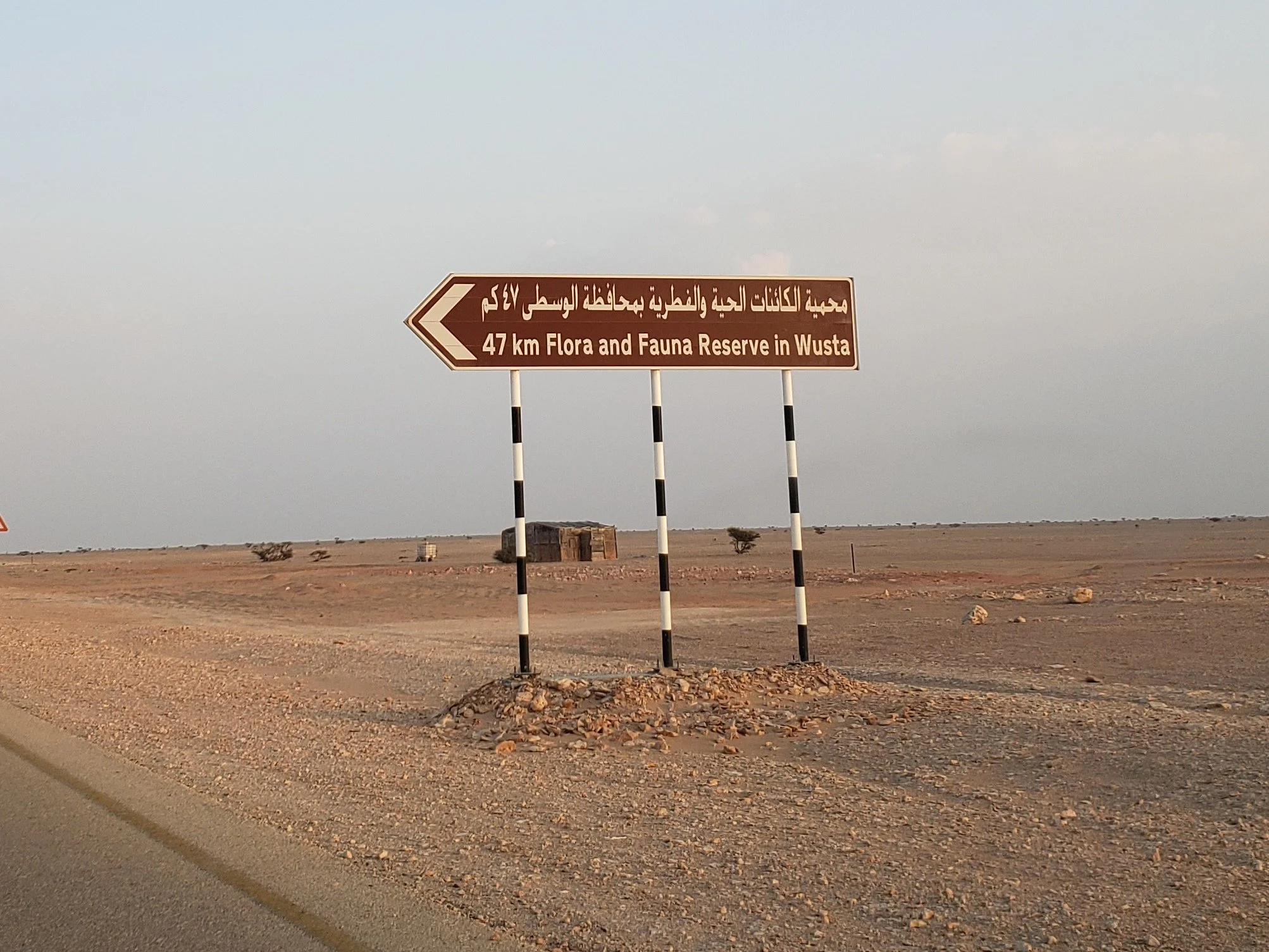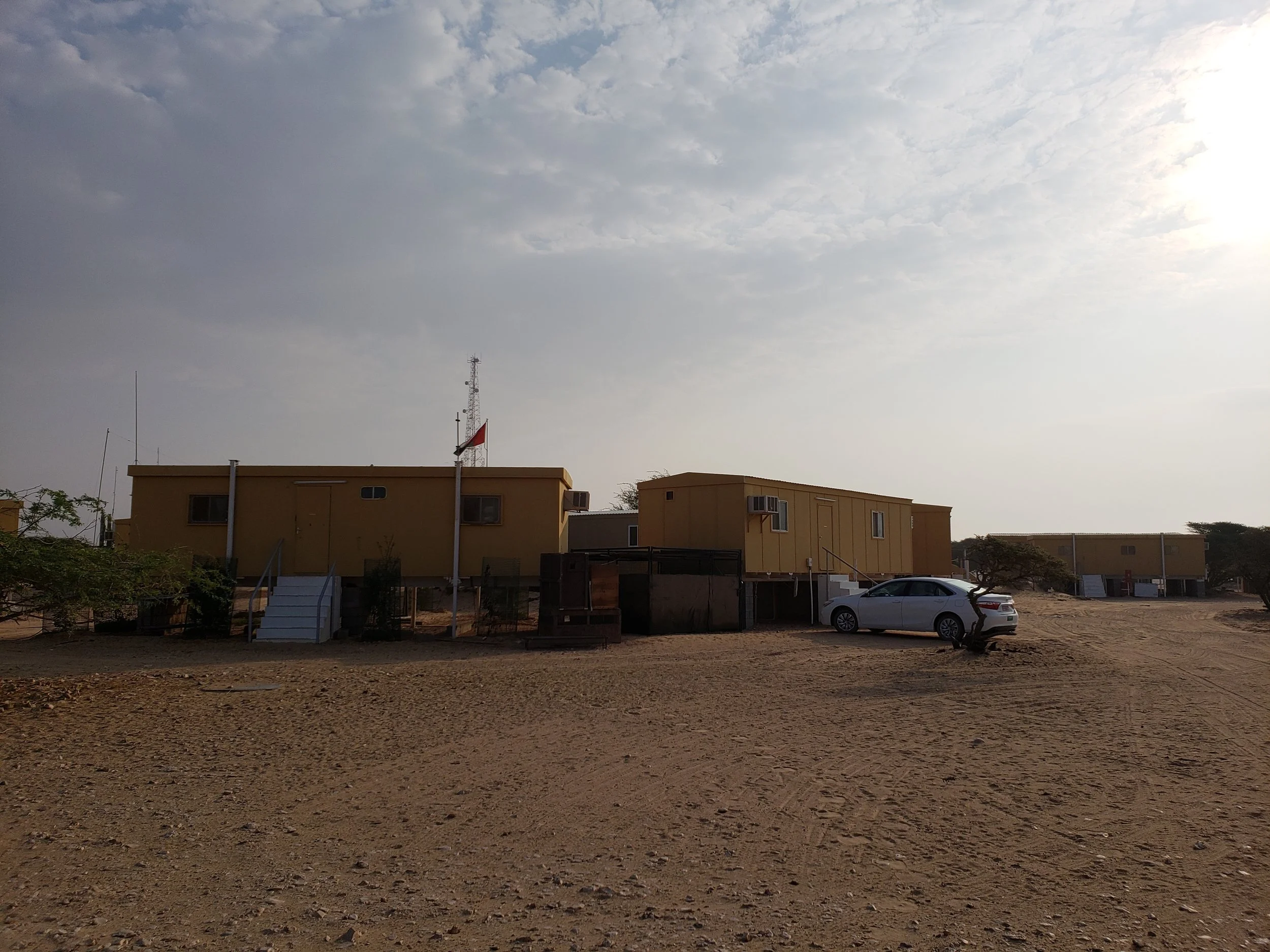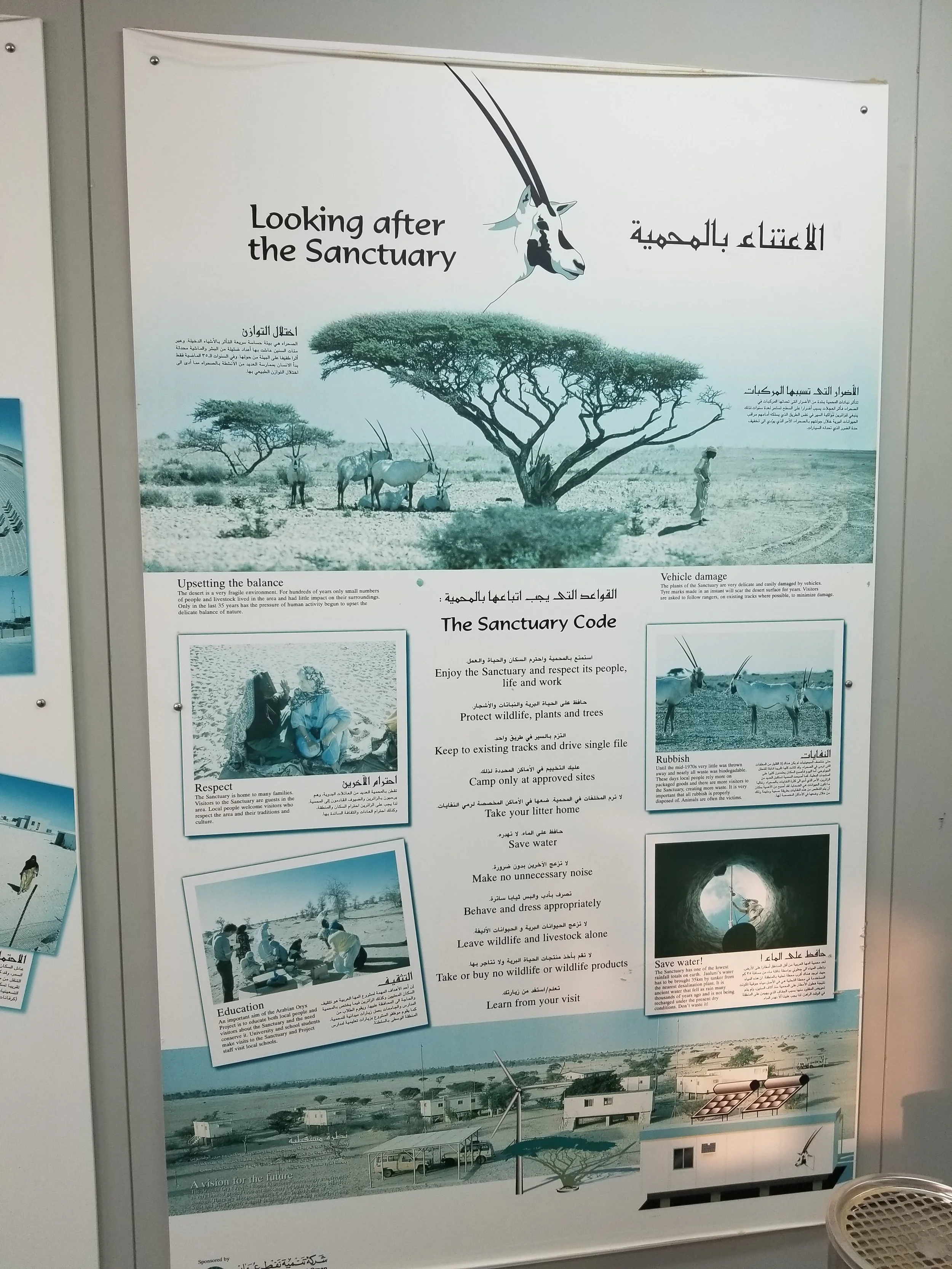
Arabian Oryx Sanctuary
Formerly the Arabian Oryx Reserve and the Al Wusta Wildlife Reserve
Visited in 2018
The main reason for my trip to Oman was the wildlife. Having been told about the turtles swimming up to the beaches, the dolphins swimming alongside boats and the migratory birdlife from a friend in high school, Oman has always been on my list to visit, it just took nearly 20 years. While doing research, I came upon the story of the Arabian Oryx reintroduction program.
History:
The Arabian Oryx had been extinct in the wild by the 1960s. By royal decree, the Sultan started “Operation Oryx” to re-establish the Arabian Oryx population and reintroduce them into the wild. Five Oryx from Phoenix Zoo were flown to the location known as the “Arabian Oryx Reserve”, and then the “Al Wusta Wildlife Reserve”. Other captive animals were donated from other sources.
Over the next few decades, the population was re-established and hundreds of animals were reintroduced into the wild. That number quickly drastically diminished as the animals were poached and captured for resale. Many oryx were sold to neighbouring countries who had lost their wild oryx to poaching previously.
Neighbouring countries have also instituted their own programs, allowing multiple populations to flourish. A number of studies have been undertaken and published, showing the genetic health of the population, all in all an amazing success story. The Arabian Oryx moved from extinct in the wild to “vulnerable”.
At the time of my visit in 2018, the “Al Wusta Wildlife Reserve” (as it was called, previously the Arabian Oryx Sanctuary) was run by the Office for Conservation of the Environment (OCE). The reserve fell under the Ministry of Environment and Climate Affairs (MECA).
Through “machinery of government” changes, the government ministries and departments (as well as authorities and offices) went through a reshuffle in 2021 following the crowning of the current Sultan Haitham bin Tariq in 2021. The Office for Conservation of the Environment (OCE) was amalgamated into the Environment Authority (EA) by Royal Deree 70/2021.
The reserve name was changed again to the “Arabian Oryx Sanctuary” by royal decree 18/2023 in March 2023.
The staff at the reserve have been changed since my visit, due to the “machinery of government” changes.
There was an official application to visit form once, that I did not use, but I don’t see any reference to it now.
How to get to the Arabian Oryx Sanctuary
Having learnt that the reserve is available to the public, this became the main focus of my trip. I contacted another TripAdvisor user @msercombe regarding her review. I was put in touch with the vet (who was out of the country). He put me in contact with one of the biologists to obtain the details. The biologists work two week on, two week off shifts, so when you’re there would depend on who will be working.
We arranged to visit for two nights (OMR25 per night) and hire one of the biologists to be our guide, and because I didn’t rent a 4WD.
We were warned about the roadworks by the staff, so we knew to expect delays. The drive from Muscat to Adam was busy but smooth, and I certainly was amazed by the hundreds of speed cameras along the highway. We stopped for fuel along the way, stretching our legs, never being worried about the distance between service stations.
From Adam to Haima, the roadworks as part of the upgrade of the highway from Muscat to Salalah slowed the drive down drastically in places. Large semi-trailers and some single lane periods made for a much slower journey. We stopped in Haima at the Shell service station to fuel up and purchased a shawarma at the nearby café.
We let the reserve know that we were on our way at that point as the mobile reception along the way and at the reserve was inconsistent, and the gate to the reserve was to be locked.
From Haima, we drove 63km along the Haima to Duqm road (Highway 37), then turned off the highway at the sign for the reserve.
We then drove 35km along a sand road to the camp, stopping at the gate to be let in. There was a fork in the road part way along, but it was obvious which was the main path.
It was stressed in communication that we let the staff at the reserve know ahead of time as the main gate is locked outside of hours.
The biologist met us at the camp with a dallah of fresh coffee. The camp is a series of demountable buildings, raised above the ground due to floods decades ago.
Staying at the Arabian Oryx Sanctuary
Staying at the Arabian Oryx Sanctuary (Al Wusta Wildlife Reserve) in Oman was an amazing experience. The remote camp in the reserve was peaceful and welcoming.
The site is very similar to how it was when the camp was opened. We stayed in the same demountable buildings as the workers, including a bedroom, bathroom and kitchen. We discussed what time to start our day with the biologist, followed by dinner (in tiffins) and fresh coffee.
In the morning we were provided with breakfast, coffee and chai. Breakfast consisted of fresh bread, cream cheese and jam. We were provided with meals the whole extent of our stay, the same meals as the workers. Tiffins filled with delicious spiced chicken, beans, rice, salads, omelettes and always fresh bread. Honestly, the food was a welcome surprise as we had packed snacks not knowing what refrigeration and kitchen space would be available, and the food provided was significantly better!
Wildlife in the Arabian Oryx Sanctuary
We started our day with a visit to the breeding paddocks to view the Arabian oryx feeding, as well as the sand gazelle pens and the mountain gazelle pens. We witnessed the first oryx calf of the season, almost impossible to see against the sand. Luckily a biologist was our guide!
The biologist explained the history of the site, how it came to be, and the successes and failures to date. I majored in Zoology, so we discussed the genetics and difficulties at length. We shared this passion for discussion, and I’m sure my girlfriend wasn’t as interested in the depth of the conversation.
As I was wanting to photograph the animals, the biologist ensured that I had a good angle and was happy to oblige driving me around. The biologist also showed us the sand grouse that wintered in the area, as well as some shrikes.
It was clear that the biologist and all the staff deeply cared about the wildlife and were proud of the project. They beamed with huge smiles when talking about the animals and how proud they were of their jobs.
Wadi al Khlata
We had a quick lunch and then headed out for a long afternoon into the reserve. The reserve is in Wadi al Khlata, which was once under a glacier. The glacial scarring is still somewhat present. The geology of the area has been studied by geologists from all over the world over many years due to the uniqueness.
The biologist explained the hills and the cliffs, the glacial scarring, the fossilised sea and tree life, the ibex habitat and the other animals in the area. We unfortunately didn’t see any ibex this trip. There had been sightings of Arabian wolves and even a hyena.
The biologist showed us sandstone and limestone caves which the locals said were caused by meteorites (they weren’t, it’s from water).
Museum at Arabian Oryx Sanctuary
Back at the camp, we visited the museum and education centre where local schools and visitors to the reserve can learn the history of the reserve and the area. It’s a fascinating area from a geographical perspective and from the history of the oryx project. We then left and the biologist pointed out the air strip that still exists from when the oryx were originally flown in.
The biologist asked if my girlfriend had ever had fresh camel milk, which she hadn’t (I had, having grown up in the middle east). Excited, he then took us to a bedouin camp just outside of the reserve where locals were enjoying the afternoon with dates, fresh camel milk and coffee.
We were then visited by camels coming by looking for food, and took some fun photos.
We spent the time laughing and making jokes, and all the young men were overjoyed to show us their camels and share the milk and dates. The were equally excited to follow my girlfriend on instagram.
A sandstorm then came out of nowhere and we headed back to camp for another amazing meal in tiffins.
After delicious breakfast, we headed back out to the breeding paddocks to view and photograph the sand gazelle males separated from the females. We visited the oryx again and took more photos. After this we parted ways. I’ve stayed in touch with the biologist since visiting, discussing the reserve and Omani photographers on Instagram. This truly was the highlight of my trip and worth the journey!










